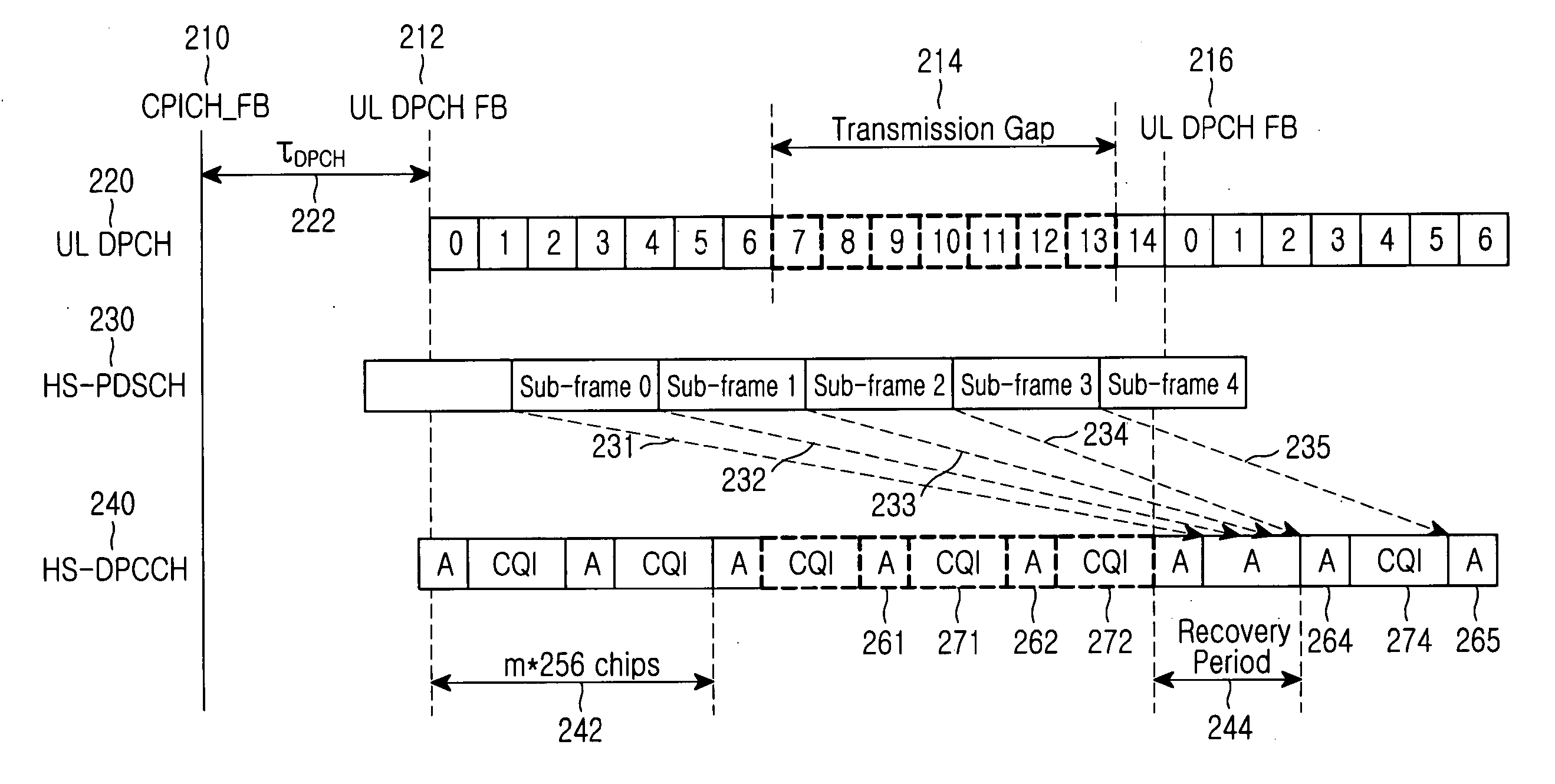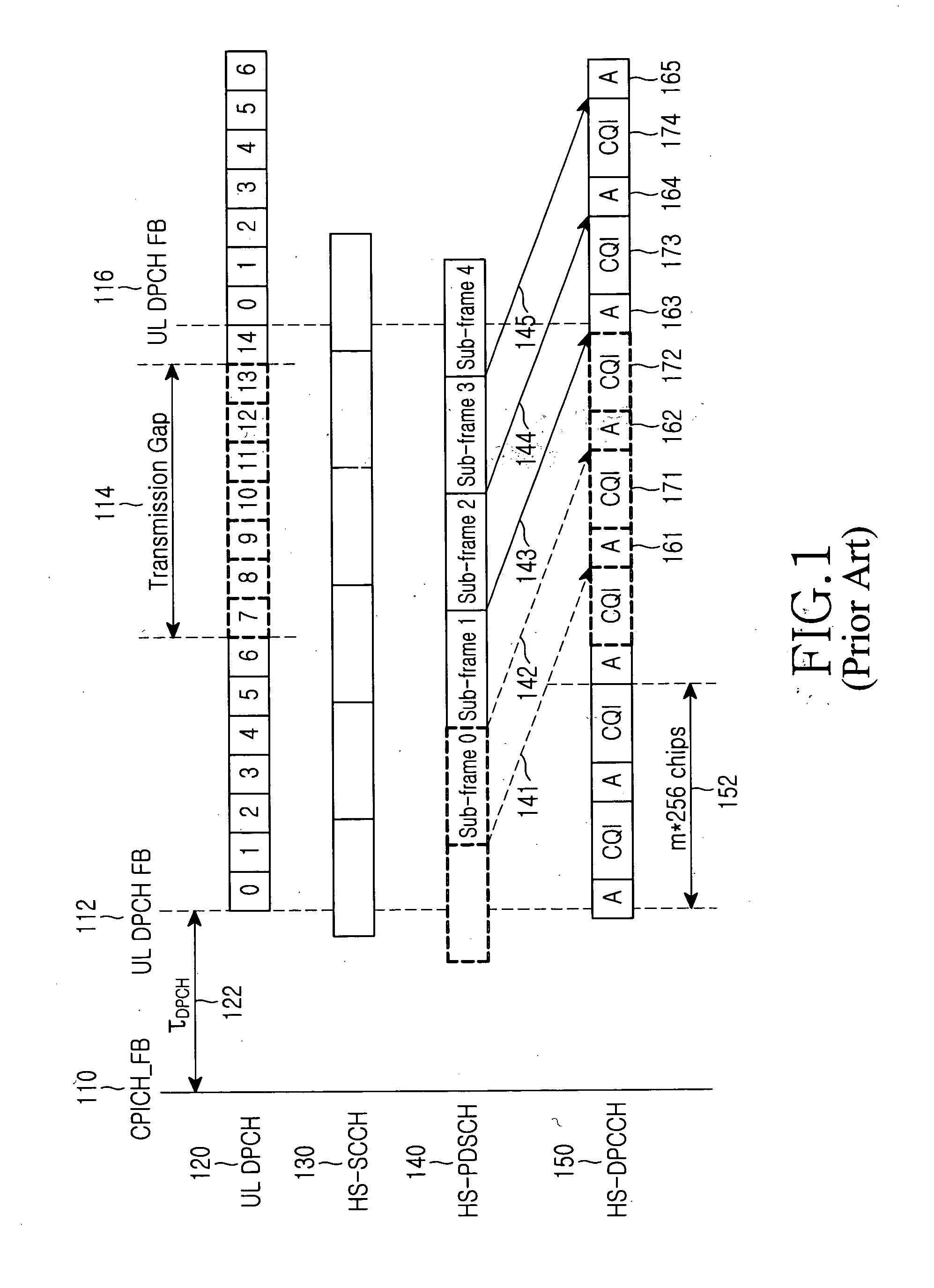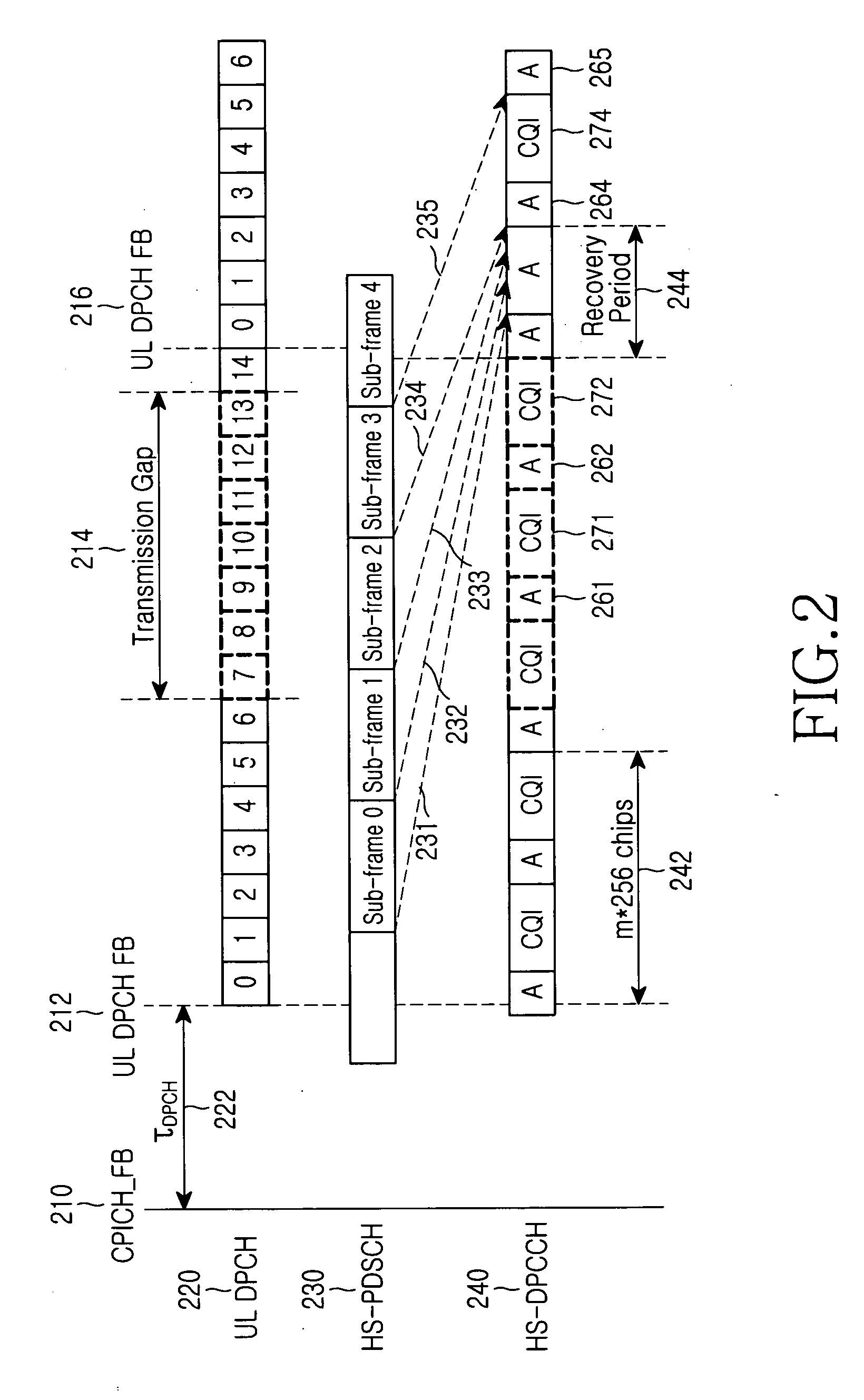Method for performing compressed mode-based HARQ in a mobile communication system supporting HSDPA
ompressed mode technology, applied in the field of compressed mode-based harq in a mobile communication system, can solve problems such as packet data transmission delay, and achieve the effects of preventing a transmission delay of an ack/nack, increasing transmission power, and preventing a transmission delay
- Summary
- Abstract
- Description
- Claims
- Application Information
AI Technical Summary
Benefits of technology
Problems solved by technology
Method used
Image
Examples
first embodiment
[0056]FIG. 3 is a diagram illustrating a method for transmitting a representative value of ACK / NACK information according to a first embodiment of the present invention. Referring to FIG. 3, a UE (not shown) receiving packet data over an HS-PDSCH 330 from a Node B (not shown), transmits ACK / NACK information for the received packet data. At this point, the UE supporting a compressed mode fails to transmit ACK / NACK at the corresponding time for a TG period 314.
[0057] In this case, the UE transmits the ACK / NACK that failed transmission for the TG period 314, through an available subframe 344 after the TG period 314. That is, the UE uses the subframe 344 after the TG period 314 as a recovery period 344 for the ACK / NACK that failed transmission for the TG period 314.
[0058] An ACK / NACK value transmitted for the recovery period 344 is denoted by AR representing ACK / NACK signals 331, 332 and 333 for an 0th subframe, a 1st subframe, and a 2nd subframe. The representative value AR can be de...
second embodiment
[0064]FIG. 4 is a diagram illustrating a method for transmitting N ACK / NACK signals through an ACK / NACK field according to a second embodiment of the present invention. Referring to FIG. 4, a second embodiment of the present invention sequentially allocates ACK / NACK signals 431, 432 and 433 for an 0th subframe, a st subframe and a 2nd subframe to an ACK / NACK field of a recovery period 444 before transmission. That is, a second embodiment of the present invention defines an ACK / NACK field 444 of an HS-DPCCH 440, corresponding to the 2nd subframe, as the recovery period 444. After the definition, a UE (not shown) performs (N, 1) iterative coding lower than (10, 1) iterative coding on the ACK / NACK field 444 of the HS-DPCCH 440, and sequentially transmits the multiple ACK / NACK signals. Here, N is an integer greater than 1.
[0065] The UE can increase transmission power in order to compensate for deterioration in coding performance possibly caused by the reduction in coding rate of the AC...
third embodiment
[0066]FIG. 5 is a diagram illustrating a method for transmitting transmission-delayed ACK / NACK information using a CQI field according to a third embodiment of the present invention. Referring to FIG. 5, a third embodiment of the present invention transmits ACK / NACK for a 2nd subframe of an HS-PDSCH 530 through an ACK / NACK field using the existing coding scheme, and transmits ACK / NACK signals 531 and 532 for an 0th subframe and a 1st subframe of the HS-PDSCH 530 that failed transmission for a TG period 514 through a CQI field using a coding scheme having a higher or lower coding rate than that of the existing coding scheme. That is, a UE (not shown) transmits the ACK / NACK signals 531 and 532 for the 0th subframe and the 1st subframe through a CQI field 544 of a first HS-DPCCH subframe after an end of the TG period 514. The UE transmits ACK / NACK information 563 for the 2nd subframe 533 of the HS-PDSCH 530 through an ACK / NACK field 563 which is its original response period, using a (1...
PUM
 Login to View More
Login to View More Abstract
Description
Claims
Application Information
 Login to View More
Login to View More - R&D
- Intellectual Property
- Life Sciences
- Materials
- Tech Scout
- Unparalleled Data Quality
- Higher Quality Content
- 60% Fewer Hallucinations
Browse by: Latest US Patents, China's latest patents, Technical Efficacy Thesaurus, Application Domain, Technology Topic, Popular Technical Reports.
© 2025 PatSnap. All rights reserved.Legal|Privacy policy|Modern Slavery Act Transparency Statement|Sitemap|About US| Contact US: help@patsnap.com



